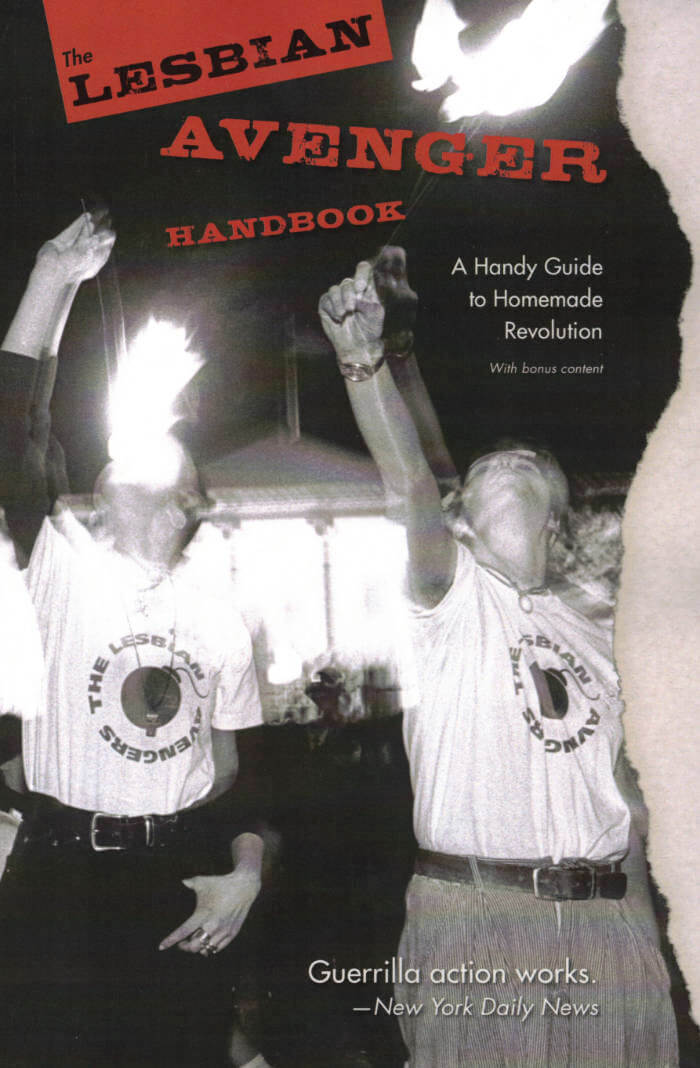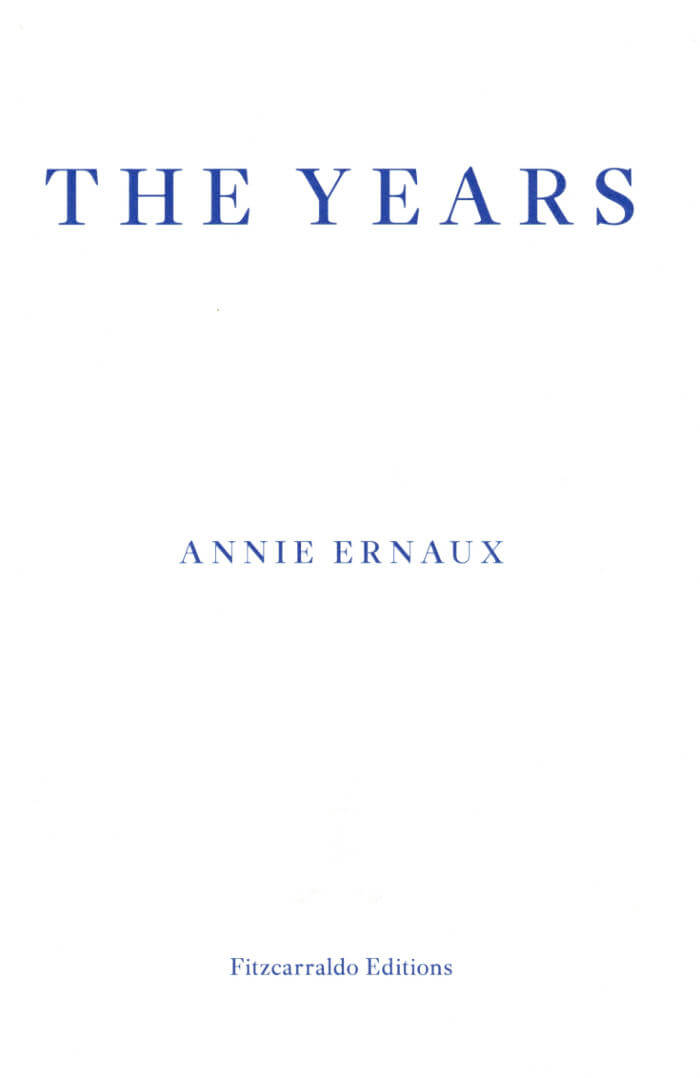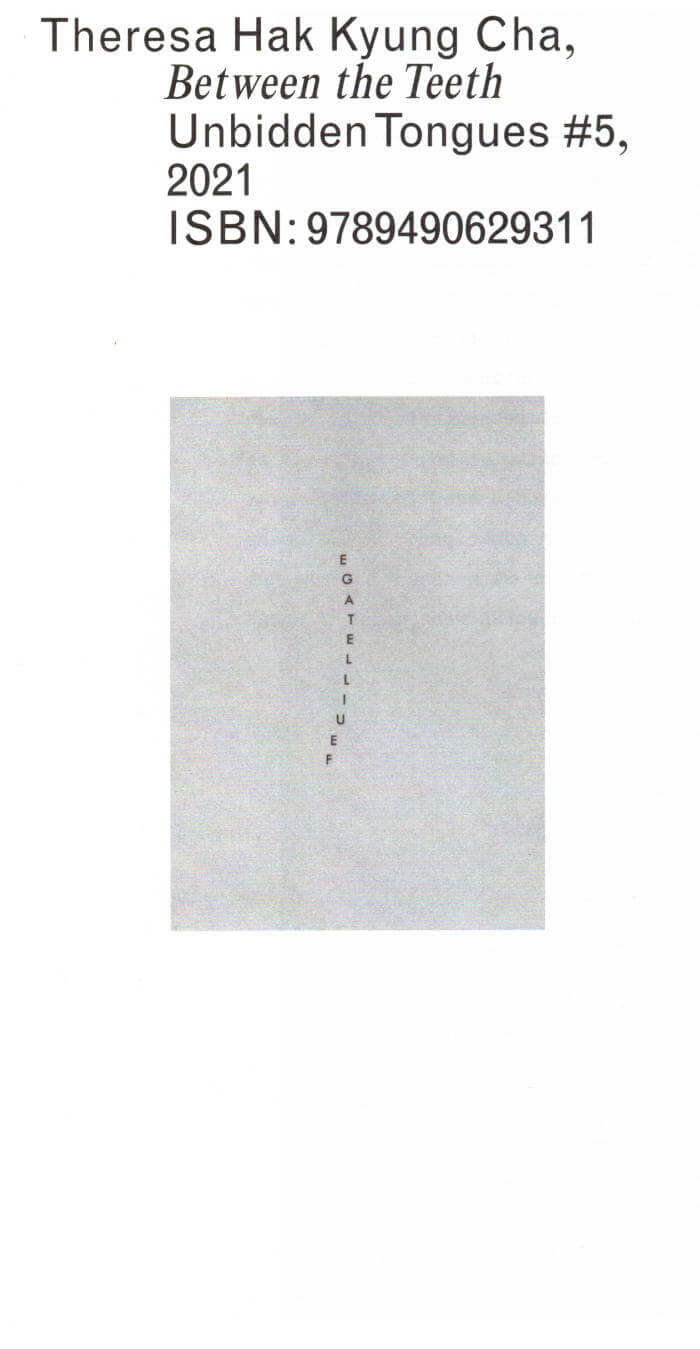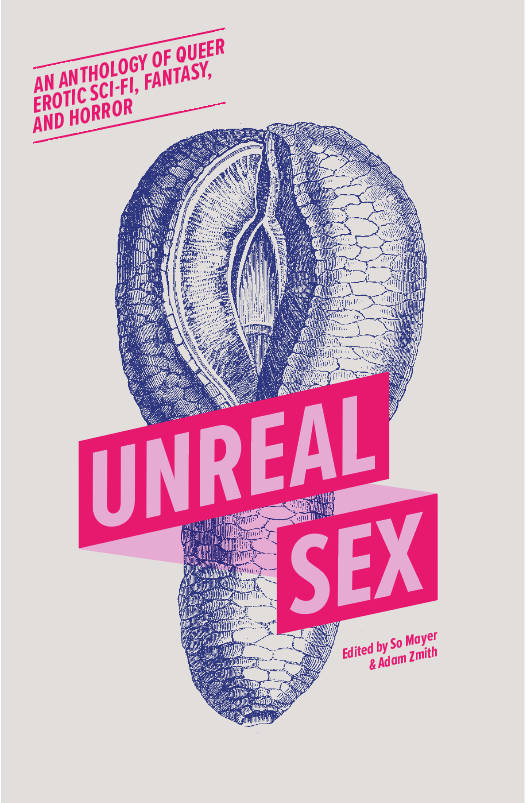Books
Books
published in 2021

Verlag der Buchhandlung Walther König
Get Rid Of Meaning
American author Kathy Acker was one of the most influential writers of the 20th century. Working through an experimental and avant-garde tradition, she wrote numerous novels, essays, poems, and novellas from the early 1970s to the late 1990s. As a postmodernist, plagiarist, and post-punk feminist, she continues to inspire generations of writers, philosophers, and artists. Get Rid of Meaning is the first comprehensive publication on Acker’s work from an artistic and literary perspective. It includes previously unpublished material from Acker’s personal archive and other collections. The publication is the compilation of a multipart research project including an exhibition and a symposium at Badischer Kunstverein in Karlsruhe.
With contributions from: Kathy Acker, Eleanor Antin, Dodie Bellamy, Hanjo Berressem, Ruth Buchanan, William S. Burroughs, Anja Casser, Georgina Colby, Leslie Dick, Claire Finch, Johnny Golding, Lynn Hershman Leeson, Anja Kirschner, Chris Kraus, Sylvère Lotringer, Douglas A. Martin, Jason McBride, Karolin Meunier & Kerstin Stakemeier, Avital Ronell, Carolee Schneemann, Daniel Schulz, Matias Viegener & McKenzie Wark.

Our Grateful Dead: Stories of Those Left Behind
Vinciane Despret’s unique storytelling, woven with ethnography and family history, assembles accounts of those living their daily lives with their dead. She explores how the dead play an active, tangible role through those who are living, who might assume their place in a family or in society; continue their labor or art; or thrive from a shared inheritance or an organ donation.
Vinciane Despret is associate professor of philosophy at the University of Liège and the Free University of Brussels. The original French edition of Our Grateful Dead ( Au bonheur des morts) won the prestigious Prix des Rencontres Philosophiques de Monaco. Her books include What Would Animals Say If We Asked the Right Questions? and The Dance of the Arabian Babbler: Birth of an Ethological Theory, both from Minnesota.
Stephen Muecke is professor of creative writing at Flinders University, South Australia. His many translations include works by Gilles Deleuze, Roland Barthes, and Luce Irigaray.

The Lesbian Avenger Handbook
Launched in New York City, in 1992, the Lesbian Avengers rejected the picket line and ordinary demo for media-savvy, nonviolent direct action.
They were superheroes arriving "to make the world safe for baby dykes everywhere;" warriors with capes and shields doing a line dance; dykes "Lusting for Power," pushing a giant bed float down Sixth Avenue in New York (with lesbians on it); nationally-ambitious Avengers eating fire in front of a hostile White House; lovers reuniting a statue of Alice B. Toklas with Gertrude Stein, then waltzing in the snow in Bryant Park. And homos who shamelessly chanted, "Ten percent is not enough, recruit, recruit, recruit."
Originally published in 1993, Homocom edition 2021

The Clearing
JJJJJerome Ellis’s The Clearing asks how stuttering, blackness, and music can be practices of refusal against hegemonic governance of time, speech, and encounter. Taking his glottal block stutter as a point of departure, Ellis figures the aporia and the block as clearing to consider how dysfluency, opacity, and refusal can open a new space for relation. Stemming from Ellis's essay "The clearing: Music, dysfluency, Blackness, and time,” published in 2020 in the Journal of Interdisciplinary Voice Studies (Volume 5, Issue 2) the present volume transcribes and translates his investigation across genres and media, turning to the page to ask: How can a book bear the trace of music, and the racialized, disabled body? Can a book be not just a manuscript, but a glottoscript? Ellis opens space for thinking liberation theoretically, historically, and lyrically.
"The Clearing is many things: a lyrical celebration of and inquiry into the intersections of blackness, music, and disabled speech; a restless interrogation of linear time; an intimate portrait of the author’s real-time experience of his stutter; a baptism in syllable and sound; and a manuscript illuminated by The Stutter. At its core, Ellis’ metaphor of the clearing becomes a place of possibility and “momentary, transitory, glimpsed liberation.” He invites us to meet him there."—Claudia Rankine

Carmelina: Figures
Ronaldo V. Wilson’s Carmelina: Figures excavates the territory between memory, nation, and embodiment, exploring place as a discipline of the body and an extension of the hand. Through poems, photographs, drawings, records of performance, and home movies recorded in Guam, Tennessee, and the Subic Bay between 1962 and 1979, Wilson reckons with familial heritage, diaspora, and legacies of militarism.
The book pays homage to Wilson’s mother, Carmelina, who served for most of her working life as a certified nursing assistant at Florin Convalescent, an assisted living facility in South Sacramento, California. A glut of signals and media recovers Carmelina’s vivid and urgent experience of exile from the Philippines to marry Wilson’s father—a Black American soldier—being disowned, and before that, of her parents’ assassinations during the Japanese Occupation. Through a visual logic of repetition and reenactment that works to unmoor sensory expectation and narrative logic, Wilson renders her figure as trace, melody against paper, drawing within song, mixed media, dance, and through improvised, masked, and recorded performances in the Berkshires, MA; Long Island, NY; Emeryville, CA; and Boulder, CO. Carmelina: Figures is a book of the Psoas, ice, smudge, and light.

Poems and Parables on the Political Utility of Art
Like a donkey dressed in zebra’s clothing, criticism can appear in a borrowed coat; perhaps it can even reveal itself in stolen poems. Here, among fables of donkeys, shoemakers and barricades, German angels and non-German angels, and a few lines from Emily Dickinson, the transformative possibilities of art are unfolded in the figure of labor.
Poems and Parables on the Political Utility of Art is a small book. It looks like poetry, but it is better described as a kind of criticism. Taking up some recent disqualifications of art’s political potential, it refutes them in a threefold movement: against the notion of commodification of works of art; against the act of denouncing art as always-already reified from the safe position of a pure, untouched theory; against the notions that art must either reveal our alienation, or produce immediate effects on the social sphere. Outlining art’s transformative possibilities in the figure of a certain labor, the argument is shaped among fables of donkeys, zebras from Gaza, apes from Adorno, and a particular barricade from the Paris Commune.

Pattern Nor Painting
The motifs produced during time-intensive dyeing processes – which uses indigo, urine, and extracts of natural waste materials – are neither conventional fabric nor lace patterns, and they have only a distant relationship to batik painting. Yet, they are simulations and portraits of both.
Pattern Nor Painting starts in a batik Workshop in Bantul, Indonesia where an artist reconnects with her blank canvas and the batik techniques she learned from an artist in Serekunda, the Gambia many years ago. As documented in this publication Van Hoorebeke’s installations and performances deftly combine unique textiles and ceramics with production-chain goods, ranging from car parts to strawberry jam. Engaging with ages-old traditions of batik production for present-day communities and settings, her work embodies ancient craft, story-telling, time, female thinking, and above all, a connection to the natural world.

Why are they so afraid of the lotus?
Based on questions raised by the work of filmmaker Trinh T. Minh-ha, the second volume of the Wattis Institute's annual reader includes new writing and art by Ranu Mukherjee, Kathy Zarur, Shylah Hamilton, Astria Suparak, and Tamara Suarez Porras, as well as written and visual contributions by Trinh T. Minh-ha, Mei-mei Berssenbrugge, Sky Hopinka,Christina Sharpe, Christine Wang, Camille Rankine, Dionne Brand, Renee Gladman, Theresa Hak Kyung Cha, Kameelah Janan Rasheed, and Steffani Jemison, among others.
What does the promise of "speaking nearby" rather than "speaking about" look like today? What are the politics of hospitality? What are the problematics of "postfeminism," and how do we challenge the West as the authoritative subject of feminist knowledge? What are the ways that language can be a site of rupture? How do we generate mistrust in the "well-written," and how can poetry be a radical act of refusal? How can we be subjects that believe in land and not borders? What influence has technology and digital space had on the "making and unmaking of identity"? How do we navigate a cyclical eruption of decolonizations?
The Wattis Institute's annual reader, A Series of Open Questions, provides an edited selection of perspectives, images, and references related to the Wattis's year-long "On our mind" research seasons. Each volume includes newly commissioned writing by members of the research season's core reading group, as well as text and visual contributions by a diverse range of other artists and writers. The title of each reader takes the form of a question and becomes, as new books are published, a gradually evolving series of open questions.

Kal Rituals – The Many Headed Hydra Magazine
The Many Headed Hydra, Aziz Sohail
The first in a series of publications emerging from the transoceanic platform Kal, Kal Rituals proposes queer and trans feminist ecologies, embodiments and mythmaking.
The contributions trace and disrupt cross-colonial legacies through bodies of water lapping at the shorelines of the Arabian Sea, the Indian Ocean, and the Atlantic.Kal Rituals is an ode to transterritorial alliances that disrupt binary contours of time and being. Kal Rituals assembles practices of queer world building in extended pandemic time, amidst deep ecological and social transformations, offering an expression of anti-colonial resistance and joy.
Kal is a transoceanic platform enacting queer-feminist pasts and futures and decolonialecologies from South Asia and its diasporas and post migrant Europe.

Blueberries
Blueberries could be described as a collection of essays, the closest term available for a book that resists classification: a blend of personal essay, polemic, prose poetry, true-crime journalism and confession that considers a fragmented life, reflecting on what it means to be a woman, a body, an artist. It is both a memoir and an interrogation of memoir. It is a new horizon in storytelling.
In crystalline prose, Savage explores the essential questions of the examined life: what is it to desire? What is it to accommodate oneself to the world? And at what cost?

The Years
Considered by many to be the iconic French memoirist’s defining work, The Years is a narrative of the period 1941 to 2006 told through the lens of memory, impressions past and present, cultural habits, language, photos, books, songs, radio, television, advertising and news headlines. Annie Ernaux invents a form that is subjective and impersonal, private and communal, and a new genre – the collective autobiography – in order to capture the passing of time. At the confluence of autofiction and sociology, The Years is ‘a Remembrance of Things Past for our age of media domination and consumerism’ (New York Times), a monumental account of twentieth-century French history as refracted through the life of one woman.
Translated by Alison L. Strayer.

Between the Teeth
Produced on the occasion of the exhibition Unbidden Tongues #5: Theresa Hak Kyung Cha: Between the Teeth at Manifold Books, Amsterdam, November 28, 2021 – January 22, 2022.
Drawing on artist, poet and filmmaker Theresa Hak Kyung Cha’s extensive and largely unexhibited archive of ‘work on paper’, Unbidden Tongues #5: Between the Teeth is a publication-turned-exhibition and the fifth title in the series. From never-realised film scripts to concrete poetry and artists statements written intimately in the first person, the collection of material selected for this occasion presents the varying ways with which Cha drew on her personal and familial experience as an immigrant to conceptually grapple with language and its mediation and suppression, particularly, in this case, in its written form.

Oral Informants
Unbidden Tongues #4: Oral Informants draws on the work of Australia social historian Janet McCalman who, in 1998, published a comprehensive history of the Melbourne Women’s Hospital. Written through the medical records of the women who were at one time or another the hospital’s temporary residents, McCalman’s account draws on a vast archive of 14,000 gynaecology records and over 70,000 midwifery records to build the hospital’s history through the administrative documents that litter its archive. Composed of an article written by McCalman in 1999 as well as a case file of original nursing notes, Oral Informants presents the process of penning a (medical) history lesson uniquely based in the oral testimony of women.
2021, 32 pages (b/w ill.), 14 × 22.5 cm, English

Unsorcery (2nd Edition)
A collection of writings by Alina Popa and Florin Flueras written over a seven-year period.
Unsorcery composes and explores ways of sorcery that can eventually surpass or undo some of the contemporary realities and subjectivities. It is an Artworld involved in a productive alienation from concepts through experience and from experience through thought. Unsorcery is an environment in which Alina Popa and Florin Flueras were working together, each following their own path, doing their own practices, texts and performances around the concepts: Life Programming, Artworlds, Black Hyperbox, Second Body, Dead Thinking, End Dream.
New expanded edition of the book first published in 2019.
Alina Popa (1982-2019) was a Romanian artist who moved between choreography, theory, and contemporary art.
Florin Flueras (born 1978 in Târgu Mureș, Romania) oscillates between contemporary performance, visual arts and theory as contexts in which he activates.

C'est Bien
The Struwwelpeter and other creatures cavort in a sunlit and happy garden. They all give in to their craving to dig their fingers father inside an adventure reminiscent of both Warhol’s ‘In the Bottom of My Garden’ and Bruegel’s ‘Children’s Games’. Graphic designer and illustrator Olga Prader’s whimsical colouring book makes sure we all know that strict virtue is a hoax. C’est bien!

Yes, I Am A Destroyer
I travel far across the city, cut it knowingly, concealing behind me the entrances to tunnels, altering the signage. I traverse the grimiest bowels, skirt the farthest wettest edges like a silverfish active only in the hallucinatory hours, to avoid becoming known, to avoid any collusion between my body and theirs, its.
Under the neon sky of a sick city, which might be London, a nameless governess oscillates between lucidity and dissociation, solitude and communication, wage labour and escape attempts. A wild and unreliable narrator-without-character—ardent, delirious, complicit, vengeful, and paranoid—she embodies a perverse and chaotic resistance. Simultaneously demonic and angelic, both maniacal and generous in her fury, accidentally elegant, tongue tied and barbed, she veers towards defiance as devotion. An anti-Bildungsroman in the collapsing first person, Yes, I Am A Destroyer is an unbecoming record of memory and forgetting, of a relentless undoing.
‘Any girl who learns how to read is already a lost girl, wrote the infamous confessionalist Rousseau. But if that lost girl, with insatiable pronoun, bastard spawn perhaps of the exiled Genevan, palmed a pen and confessed—how would that read? What can she know? With relentless intelligence and urgent prosody, Mira Mattar shows us. She invents a narrator in the raging anti-tradition of Violette Leduc and Albertine Sarrazin, leaps beyond the cloying contract of capital with the feminine, of intimacy with violence, to animate a lush document of the refusal of subjection. Much like the young Jean-Jacques, she’s a tutor underpaid for her sensitivity. She is, like him, a thief of small things, a sponge for the edifying comportments of the employing class. What she makes of her servitude—a fabulously grotesque encyclopedia of sensing—is dedicated to female anger. Scrubbing, washing, chewing, frigging, barfing, stealing, moisturising, shitting: every surface, every gesture, is appropriated to her bodily resistance. ‘Live anyway’ is her stoic motto. This glorious tract ends with a call for the anarchical vigour of the animal body we share. Read it and flourish. You will perhaps be invoiced.’
–> Lisa Robertson
Mira Mattar writes fiction and poetry. She is an independent researcher, editor, and tutor. A Palestinian/Jordanian born in the suburbs of London, she continues to live and work there. She has read and published her work widely. Yes, I Am A Destroyer is her first book.

Future Imperfect
Then let the story really begin in 1968, though it has little to do with May. By chance it opens in January of that year, and it really concerns me rather than the world of political events, though these are always on my mind, as they were always on my mind. Its antecedents are in the summer of 1967, when I lived, happily, in a squalid bedsit in the then squalid Ladbroke Square, as well as in some basement maid’s room in the West End, and did my secondary sources in the British Library, the V&A, and also, a bit, in Paris, Bordeaux, and Montauban, though that was to flirt with the primary sources ahead of time.
This short Bildungsroman sets beside each other the fault lines of events and moments recalled without a diary with the verification and sometimes undermining effects of new research of materials, the recovery of what was known, what might have been known, and what was merely probable, as if this were a history of the history of art.
‘This is an extraordinary journey. Using ekphrasis as method—and as a proper timeline for an indefinite confinement—it wanders through a lived calendar of scholarship, where forgotten stories of art history books flirt with library indexes and archival catalogues, and streetwalking meets gay longing at the heart of the text.’
– Élisabeth Lebovici
Adrian Rifkin worked in art departments as a historian and a studio tutor, in historical and cultural studies as well as visual culture, from Portsmouth Polytechnic in 1970 to Goldsmiths, University of London in 2012, where he was a professor of Art Writing. A collection of essays, Communards and Other Cultural Histories, edited and introduced by Steve Edwards, was published in 2017. Interdisciplinary Encounters, Hidden and Visible Explorations of the Work of Adrian Rifkin, edited by Dana Arnold, appeared in 2015.

Indivisible
The conclusion of a radically philosophical and personal series of Fanny Howe novels animated by questions of race, spirituality, childhood, transience, resistance, and poverty.
First published by Semiotexte in 2001, Indivisible concludes a radically philosophical and personal series of Fanny Howe novels animated by questions of race, spirituality, childhood, transience, wonder, resistance, and poverty. Depicting the tempestuous multiracial world of artists and activists who lived in working-class Boston during the 1960s, Indivisible begins when its narrator, Henny, locks her husband in a closet so that she might better discuss things with God. On the verge of a religious conversion, Henny attempts to make peace with the dead by telling their stories.

Borderlands / La Frontera: The New Mestiza 5th Edition
A new edition of Anzaldúa's classic text.
Borderlands/La Frontera: The New Mestiza is a 1987 semi-autobiographical work by Gloria E. Anzaldúa that examines the Chicano and Latino experience through the lens of issues such as gender, identity, race, and colonialism. Borderlands is considered to be Anzaldúa’s most well-known work and a pioneering piece of Chicana literature.
Rooted in Gloria Anzaldúa's experience as a Chicana, a lesbian, an activist, and a writer, the essays and poems in Borderlands/La Frontera: The New Mestiza profoundly challenged, and continue to challenge, how we think about identity. Borderlands/La Frontera remaps our understanding of what a border' is, presenting it not as a simple divide between here and there, us and them, but as a psychic, social, and cultural terrain that we inhabit, and that inhabits all of us.

Darryl
Darryl Cook is a man who seems to have everything: a quiet home in Western Oregon, a beautiful wife, and a lot of friends to fuck her while he watches. But as he explores the cuckolding lifestyle, he finds himself tugging at threads that threaten to unravel his marriage, his town, and himself. With empathy and humor, debut author Jackie Ess crafts a kaleidoscopic meditation on marriage, manhood, dreams, basketball, sobriety, and the secret lives of Oregonians.
Jackie Ess is a writer, cultural mischief-maker, and minor internet celebrity. A co-founder of the Bay Area Trans Writers Workshop, her work can be found in Heavy Feather Review, the Zahir, the New Inquiry, Vetch, and the anthology We Want It All: An Anthology of Radical Trans Poetics. Darryl is her first novel.

Unreal Sex
An anthology of queer erotic sci-fi, fantasy, and horror.
In these ten stories, everything is sex: walls, wax, the past, your future, your neighbours, hankies, candles, circuit boards, petri dishes, scrap metal – and language itself. Conjuring experiences for which there are no words, our amazing queer authors generate new tongues from the heat of their communing with a wild variety of lifeforms.
From Diriye Osman’s spiritualised Peckham to Jem Nash’s time-travelling trans multiverse, these stories transport you to new ways of being and feeling. In a word, it’s CruiserShimmeringLipophilicNeckingerCircuitGirlboss.
Whether you get horny from aliens, ghosts, robots, utopia, possession, ritual, or the completely surreal, there’s a story here for you. But why stop at one when you can taste pleasure in each and every one?
Featuring stories from: Gracie Beswick, Swithun Cooper, Rachel Dawson, Rien Gray, Vivien Holmes, Jem Nash, Diriye Osman, Alison Rumfitt, Nicks Walker & Anna Walsh.
Published November 2021.

"Tu verras quand tu seras grand!"
Un livre qui t’expliquera tout sur l’argent, l’économie capitaliste, le système bancaire, la police et la révolution !
"Tu verras quand tu seras grand!", premier livre pour enfants des éditions L'Amazone, explique l’économie capitaliste mondialisée à travers quatre chapitres sur l'argent, le système bancaire, la police et la révolution. Il a été réalisé à partir des livres cités par l’auteure Marie L’or Kaeppelin-Billaudot dans Il sera une fois… Essai sur le contenu des livres pour enfants (Espaces féminins, La pensée sauvage, 1978). "Tu verras quand tu seras grand!" part du constat que peu de livres pour enfants traitent ouvertement de la question économique alors qu’elle est omniprésente dans leur quotidien. Le détournement de ces ouvrages, plus de quarante ans après leurs publications, nous permet de repenser notre rapport à ces mythes fondateurs, de la même manière qu’un conte joue un rôle dans la construction d’une histoire commune.
À partir de 6 ans.
Conception d’ouvrage : Tiphanie Blanc
Design Graphique : Tiphanie Blanc & Roxanne Maillet
Impression riso : Autobahn
Couverture sérigraphiée : Chromodrome
Papier : Arena Natural Rough 200g & Sirio Color Foglia 350g
Typographies : Ovo de Nicole Fally, Gaya de Raphaël de la Morinerie, DinDong de Clara Sambot, Zarathustra de Lorène Ceccon, Cormorant de Catharsis Fonts & Zipper de Bob Newman
Exemplaires : 250

Wound Building: Dispatches from the Latest Disasters in UK Poetry
Wound Building is a volume of essays, with digressions, on one group of contemporary poets active in a self-organizing political poetry scene in the UK, most of whom have little to no audience outside of the little magazines that they publish and the reading series they put on. The book is a front-line report on the rapid development of this poetry in the period between 2015 and 2020, with a particular focus on the relationship of poetry to violence and its representation. The poets discussed here write violent love poems and violent elegies as well as violent fantasies composed in stabs of violent verse and violet prose. The poems themselves comprise fantasies of killing David Cameron, dreams of being split open along a seam, basement songs, hundreds of pages of notes on working life in a privatized care home in Hove, East Sussex, a four-line slogan about the Cologne groping scandal of New Year 2016, variations on the Refugees Medical Phrasebook, a life wasted in a factory in Guangzhou, an autobiographical sci-fi internet fever dream, an anarchist elegy, and a refusal to argue. Ultimately, Hayward argues that the lessons this poetry teaches is never to write a "worthy" narrative when a fucked up collage will do. Rather than a cohesive "account" of a "school" of poets, or a "contribution" to the boring tittle-tattle of aesthetic debates over British poetry as an institution, Wound Building is a front-line report on the local disasters of a contemporary UK poetry caught in the grip of the historical cataclysm of capitalist culture.
Wound Building is further concerned with aesthetic problems related to Marxism, anarchism, contemporary trans politics, and class, though its "theoretical" preoccupations are subordinated to its desire to provide a ground-level view on the writing itself, its production, its intellectual aporia, and the ways it finds itself outstripped by the ongoing "march of events." The book will be of interest not only for those concerned with contemporary British political and experimental poetry, but also more generally for anyone who wishes to think carefully about what it means to make art about present-day history and its many horrible enormities.
The book's title is derived from the idea of sublime woundedness that subtends the context of the poets discussed here: the impressions of wounds opening up like LED-lit shopfronts in the night, in a parallel universe in which injury is intoxicatingly impersonal and structural, and which forms the environment in which the poems fight to absolutize the value of every last breath, or face into the reality of extravagantly violent wish fulfillment, or dissolve themselves in a search for new ways of professing love, or transform into a kind of expressionism of vomiting up medical-diagnostic categories found in abstract social labor, or pump their verses full of the convulsive rhythms of surprise and sudden relief, without any guarantee that this is the right thing to do or that anyone will even fucking hear. Wound Building does not historicize this state of affairs as much as it attempts to live alongside the immediacy of this work, in order to see what is still possible for poetry, and criticism, to make and do.

Notes on a life not lived
This publication is based on a project by Despina Vassiliadou that ran from 2015-16. It presents a collection of photographs taken during the period, accompanied by fictional short stories.